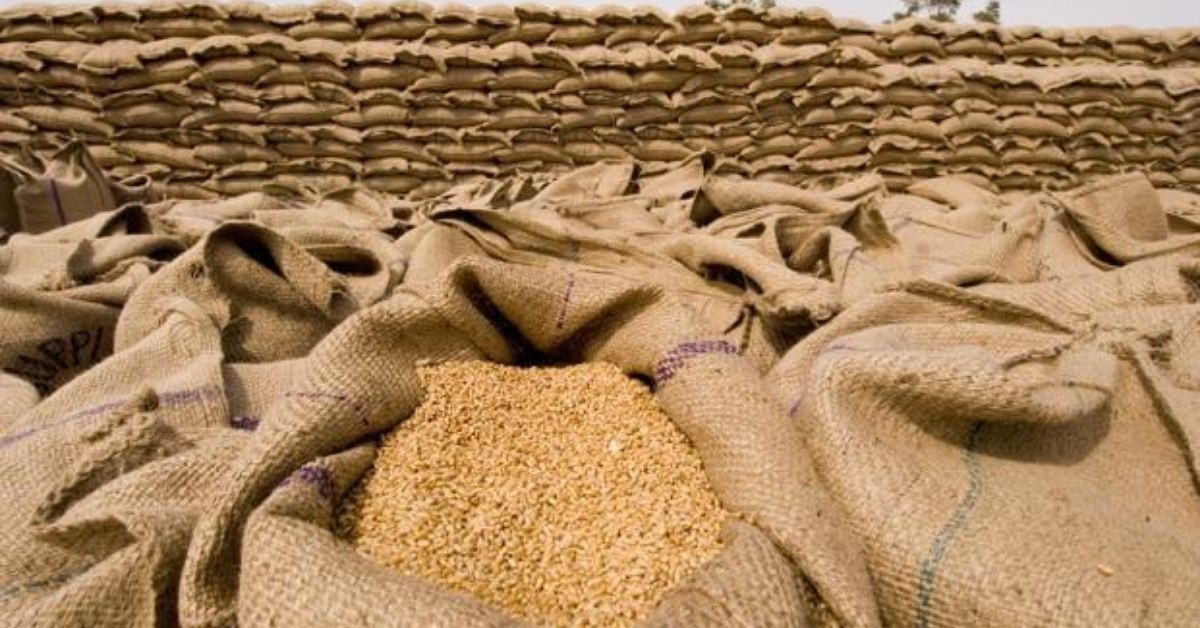Nepal has requested India to supply 300,000 tonnes of wheat to avoid a major spurt in local flour prices. The shortage of wheat has already made the flour prices dearer in the domestic market, although prices have dropped to some extent since March. Domestic suppliers may already have started hoarding wheat, says Nepal Flour Mills Association executive.
The Nepal government expects that the requested consignment would start coming from the new fiscal year 2023-24, or after mid-July.
According to reports, more than 80 percent of the world’s wheat is being consumed as flour.
Four mill owners, however, said that the proposed quantity needs to be imported from India as soon as possible or else, the price of flour in the country will go through the roof.
Nepali consumers are already battling high inflation, which has reached near 8 percent.
According to the World Bank’s latest report, inflation in South Asia is set to fall to 8.9 percent this year.
However, weaker currencies and delayed domestic price adjustments are contributing to a slower than anticipated decline in inflation.
Elevated global and domestic food prices are contributing to greater food insecurity for South Asia’s poor who spend a larger share of their incomes on food.
Last week, the Ministry of Industry, Commerce and Supplies sent a letter to the Indian government through the Ministry of Foreign Affairs, requesting a consignment of 300,000 tonnes of wheat.
Urmila KC, under secretary of the Industry Ministry, said that the import of 300,000 tonnes of wheat would start arriving from the beginning of the next fiscal year.
“As the domestic harvesting season has also started, we will analyse the production and demand gap and make further decisions,” she said. “We have not received any comments from the Indian government regarding our request,” KC added.
After India imposed a ban on wheat exports in May last year, it set a quota of 50,000 tonnes for Nepal in December.
Out of the 50,000 tonnes of wheat, 6,800 tonnes are being imported jointly by the Food Management and Trading Company and Salt Trading Corporation.
“We cannot say when the wheat will arrive as the procurement process has not yet been started. “The Indian government is yet to decide on the seller,” said Kumar Rajbhandari, information officer at the Salt Trading Corporation.
The Industry Ministry published a notice on August 8 last year requesting the sugar and flour producers to submit paperwork to apply for quotas. The Indian government has also imposed a quota system on the import of sugar.
According to Nepal Flour Mills Association, the mills have received only 33,000 tonnes of wheat so far and are yet to receive the remainder.
“If the new batch is delayed, the domestic wheat producers may jack up prices on the pretext of the Indian ban,” said Dinesh Kumar Agrawal, senior vice-president of the Nepal Flour Mills Association.
“During this time of the year, which is the harvest period, I used to receive 21 tonnes of wheat daily in my factory from domestic producers. But currently, I am receiving only a small amount,” Agrawal said, adding that it looks like the domestic suppliers have started hoarding wheat.
The flour mills are operating at 20 percent of their capacity due to the limited availability of domestic wheat, he said.
The price of flour started to jump in the local market after India put a ban on the export of wheat flour on May 13, 2022 due to a decline in its production.
The price of flour nearly doubled to Rs95 per kg.
But prices started cooling down as soon as India allotted the quota to Nepal.
“We need at least 600,000 tonnes of wheat for the next fiscal year. As Prime Minister Pushpa Kamal Dahal is going on an official visit to India soon, he should make a special request to his counterpart to allocate a sufficient quota for Nepal,” Agrawal said.
“We are weak in negotiations. Writing a request letter is not enough to bring the required quantity of wheat on time and prevent shortages,” Agrawal said. “The government-to-government talks are a must for the ease in the supply of wheat,”
In the last fiscal year, Nepal’s wheat harvesting rose by less than 1 percent to 2.02 million tonnes. This fiscal year, experts say due to the late winter rainfall, which is good for the wheat crop, the output may go up.
Wheat is sowed in December and harvested in March.
Last May, India imposed a ban on wheat exports after an unseasonal hot weather hurt the wheat crop, sending local prices soaring besides causing food security risks to India.
According to a Reuters report, India is considering extending the ban on wheat exports as the world’s second-biggest producer seeks to replenish state reserves and bring down the domestic prices. The Indian government is unwilling to open wheat exports until mid-2024, the report said.
Heatwaves in northern and central India during the crop ripening period are threatening to dent its wheat production for a second straight year, the report said.
The higher temperatures in March have been estimated to trim wheat output by 4 million to 5 million tonnes in India, the report added.
Nearly 85 percent of the flour mills in Nepal were forced to shut down due to the Indian government’s ban on wheat exports. The ban also created a shortage of refined flour and wheat flour in the local market.








